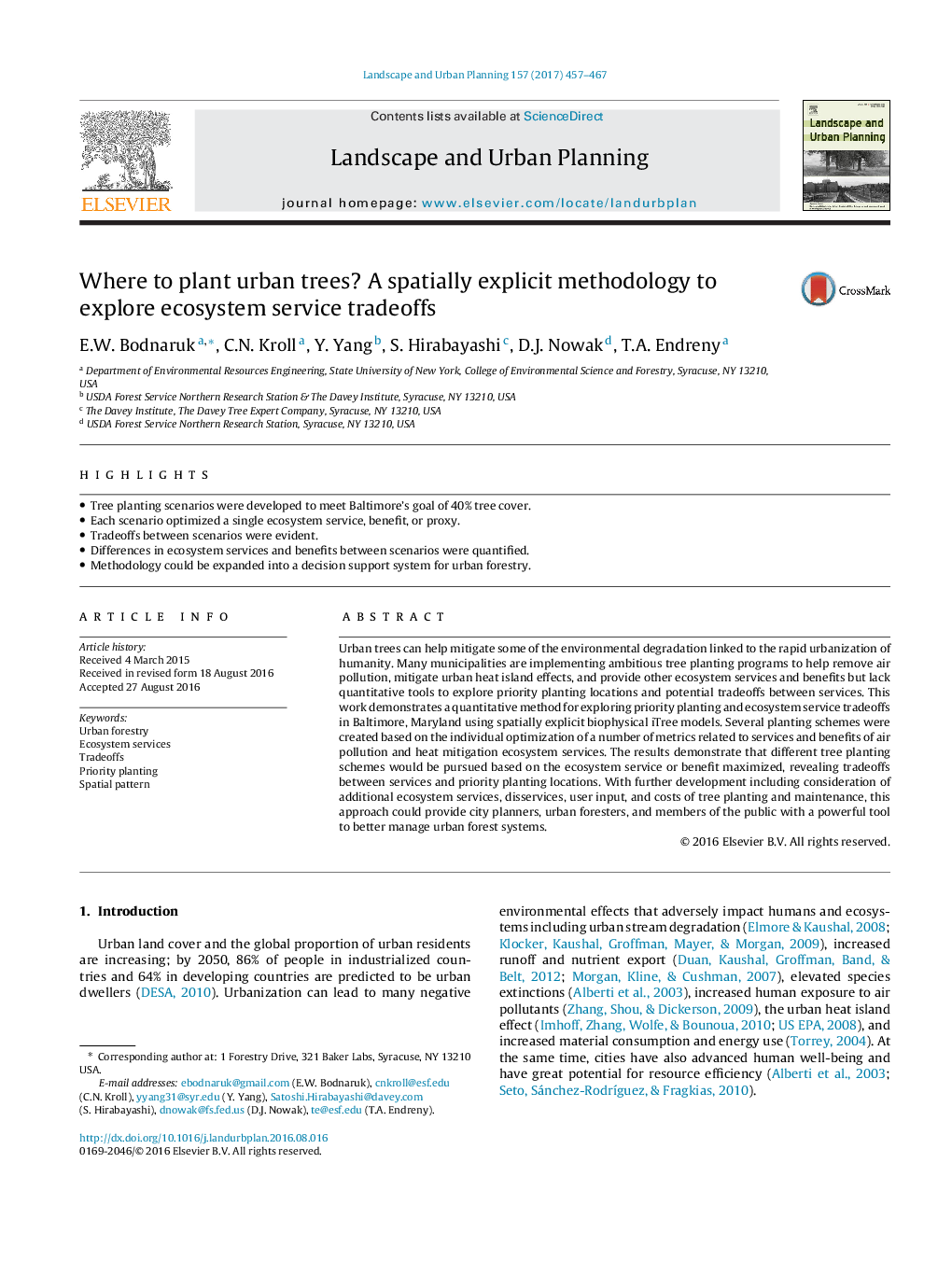| Article ID | Journal | Published Year | Pages | File Type |
|---|---|---|---|---|
| 7460426 | Landscape and Urban Planning | 2017 | 11 Pages |
Abstract
Urban trees can help mitigate some of the environmental degradation linked to the rapid urbanization of humanity. Many municipalities are implementing ambitious tree planting programs to help remove air pollution, mitigate urban heat island effects, and provide other ecosystem services and benefits but lack quantitative tools to explore priority planting locations and potential tradeoffs between services. This work demonstrates a quantitative method for exploring priority planting and ecosystem service tradeoffs in Baltimore, Maryland using spatially explicit biophysical iTree models. Several planting schemes were created based on the individual optimization of a number of metrics related to services and benefits of air pollution and heat mitigation ecosystem services. The results demonstrate that different tree planting schemes would be pursued based on the ecosystem service or benefit maximized, revealing tradeoffs between services and priority planting locations. With further development including consideration of additional ecosystem services, disservices, user input, and costs of tree planting and maintenance, this approach could provide city planners, urban foresters, and members of the public with a powerful tool to better manage urban forest systems.
Related Topics
Life Sciences
Agricultural and Biological Sciences
Ecology, Evolution, Behavior and Systematics
Authors
E.W. Bodnaruk, C.N. Kroll, Y. Yang, S. Hirabayashi, D.J. Nowak, T.A. Endreny,
